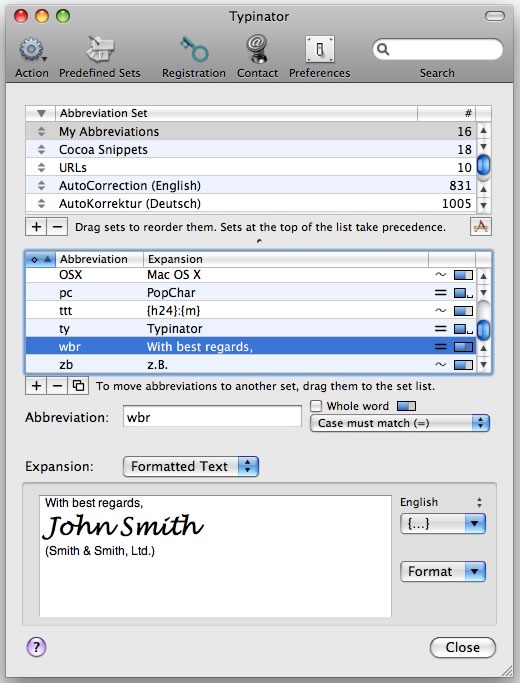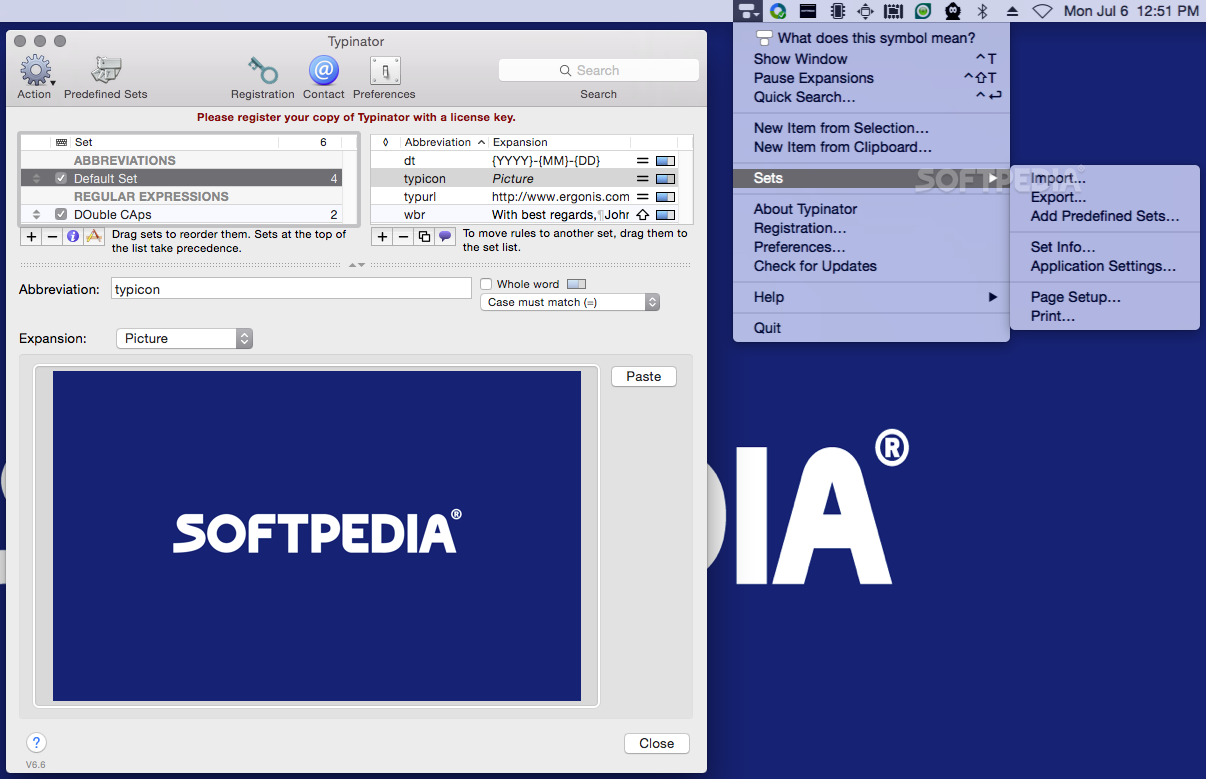

Typinator immediately shows a list of matching items. Hit your Quick Search hotkey and type the search term. In some cases, it can be even faster to use the Quick Search feature of Typinator. If you wish to look for this exact phrase (both words in this order, separated by a space character), enclose the search text in quotes: Yields all items that contain both "special" and "offer". When you enter multiple words in the search field, Typinator searches for all items that contain both words in any order. Hit the return or enter key again to jump to the next occurrence, and press the shift key along with return or enter to jump backwards. To quickly jump from one matching item to the next, hit the return or enter key after entering the search text. The right-hand column in the set list will then show the number of matching items click a set to see all those items. Also – it seems as though numerics are all passed as strings (at least in my example with d3.js.To find an item with a certain text fragment in either the abbreviation or expansion, you can open the Typinator window and enter the desired text in the search field (for example, "dear" to find a certain letter template). When d3 reads that data in, from what I can tell, it has an array of 100 elements, where each element has 3 components, one labeled x, one y, one z, with the values. If that’s confusing, think of a dataset with 3 columns (x, y, z) and 100 rows. So d3.csv (and I think d3.json) passes each row of a “dataset” as a specific element of an array, with the column names as the names of the objects within the element. Also I believe you have to source the AllClasses.R, healthvisMethods.R IN ORDER otherwise you may get an error.
Typinator examples windows#
For windows users, this isn’t a problem, but Unix – symbolic link means alias/shortcut, (sudo ln -s /Library/Frameworks/amework/Versions/2.7/bin/python /usr/bin/python2.7). I installed Python fresh again, and also put a symbolic link to python2.7 in /usr/bin (as this was where Google App Engine was looking). I had an old version of Python (2.6) (and a new one, 2.7, installed in a custom directory), so that was somewhat fun. Step 1) Read completely and follow it step by step. I also am “apart” of the group that’s doing this, so I thought it was necessary to show people that it’s possible As such, I finally got up my courage to take a shot at adapting the iris scatterplot matrix brushing example, which is essentially R’s matplot function, in healthvis. Recently, recently released the healthvis package .
Typinator examples code#
It seems possible – they already have it down for knowing if you’re in a code chunk or not for commenting – given that you don’t highlight R code and TeX at the same time – otherwise you’ll get some interesting behavior If RStudio’s native editor for Rmd and Rnw’s could rival Texmaker – I would probably switch whole sale.

Why it still isn’t optimal – RStduio has all the nice text expansion for R objects.

Why you would want to do this? Texmaker has a great text expansion for LaTeX and you can write TeX much quicker and easier in that.
Typinator examples pdf#
Texmaker default pdf viewer has some oddities with displaying figures, so I tend to change that to my external viewer (Preview or Adobe). Then just do the shortcut for R Sweave in TeXmaker (CMD+Alt+S on my Mac) and then CMD+T (quick build – which is default xelatex for me) and then you just ran your knitted document, then compiled the tex and see the pdf. R CMD Rscript -e “library(knitr) knit(‘%.Rnw’)” SO quick post – realized that you can just change R Sweave in TexMaker to: John Muschelli StrictlyStat) April 16, 2013ĭisclaimer: there are other text expanders out there (AutoHotKey for Windows) and Typinator is pay for, otherwise it has pop-ups somewhat infrequently when you use a set number of characters. But which unicode can you rely on? johndcook RT statfact with “hats”: if 𝜃̂ is the MLE of θ, f(𝜃̂) is mle of f(θ) for any function f. I have done a lot of it, and find sometimes it’s faster (think of copying and pasting whole equations when people are writing on a board), but has caused a lot of hand cramps.Īlso – (if they show up on your system), Unicode can be easily done in blogging (although I may recommend mathjax or some other latex-embedding javascript system if you’re getting math heavy), and can be used on Twitter: One of my goals this year was to go almost completely digital with respect to notes. It’s helpful to see these symbols in latex, but it’s invaluable when trying to annotate pdf notes from professors. It took a little getting used to, and a bit awkward when I made my keystrokes with colons instead of \ for LaTeX, so :mu for μ. about telling me about Typinator (which is a nice text expander for Mac), which allows me to write more readable LaTeX by using Unicode (think μ(θ) vs.


 0 kommentar(er)
0 kommentar(er)
